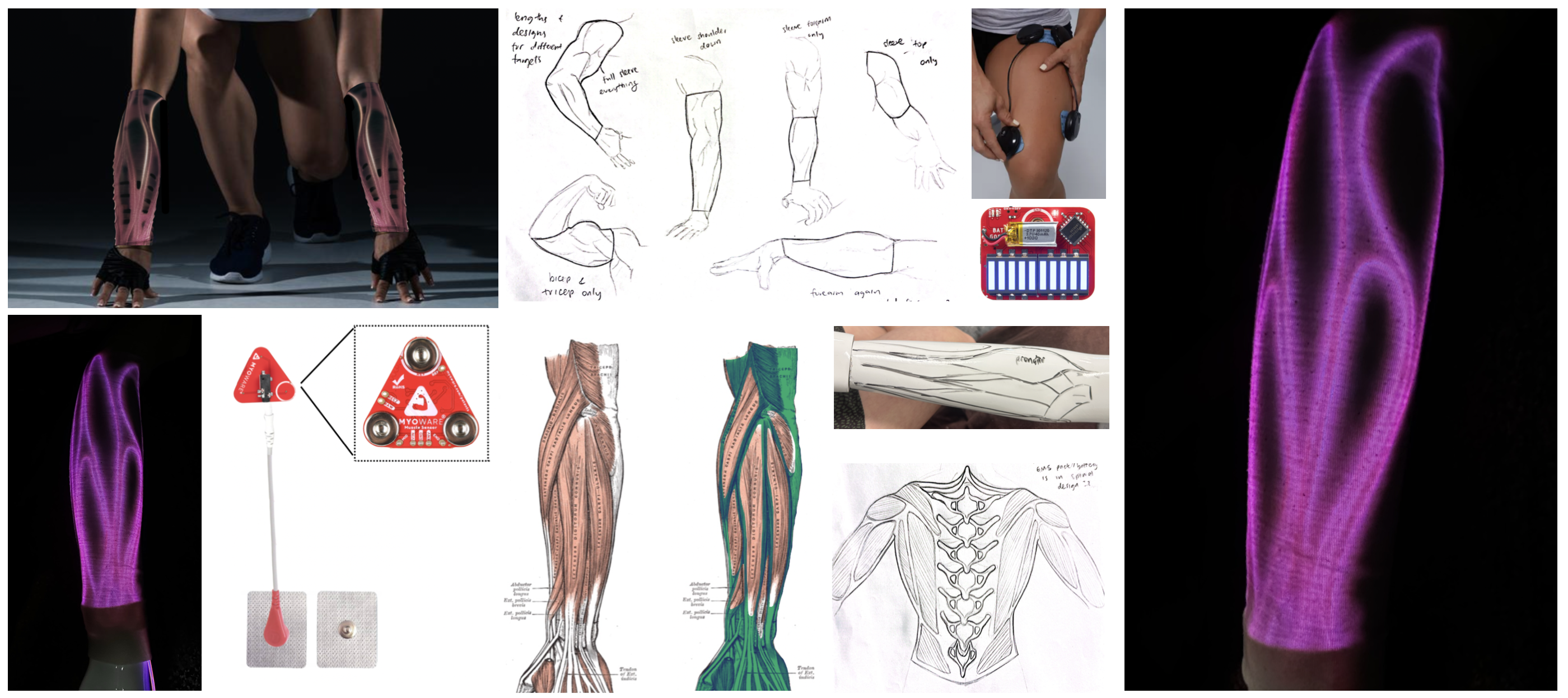Mind Muscle Connect

Mind Muscle Connect was a project I did exploring the improvement of training protocols for athletes. I did this by wiring a muscle sensing device (from MYOWARE) to corresponding EL wire, that mimics the muscle striations and insertions of a body part, to highlight muscle activation. This allows the users to get real time feedback on their mind-muscle connection and activation of their muscle groups, through sensing muscle contraction, and lighting up the corresponding activated muscle groups. I had the aim of improving performance and muscle gain for the athletes using the device, while also providing feedback to those surrounding them, to show the muscles they are using for certain exercises and allowing them to analyze how optimal their movement patterns are. This aims to help with the adaptation or learning of correct form, and in preventing injuries while maximizing growth/strength output.
To complete the project prototype, I stated with initial research into the surrounding context and background of the problem, and then researched into many possible ways of how to solve this problem, reaching extremely far out to get a better understanding of the blue sky possibilities, before honing in my research into the exact technologies I am aiming to be using, as well as sketching out the aesthetic inspirations and design concepts for a few of the different ideated solutions.
The next section of the project consisted of my prototyping and creation, as well as working through the best kinds of tech, lighting, and aesthetics, so I could make the best possible prototyped outcome. I moved into designing the schematics and making a first prototype, but so far, have only made one to represent the forearm, as this was the most easily prototype adaptation of the project.
In doing this, I expanded on my previous knowledge of circuitry and physical use of sensors, as well as biomimetic design principles, alongside anatomy. I also learned a lot more about the efficacy of muscle sensors, and trying to make streamlined circuits that wouldn’t interfere with the performance or aesthetic of the device, which was really valuable for future test cases and prototypes. Overall, this was an extremely interesting project to pursue, and I hope to expand on it further when I have the time.